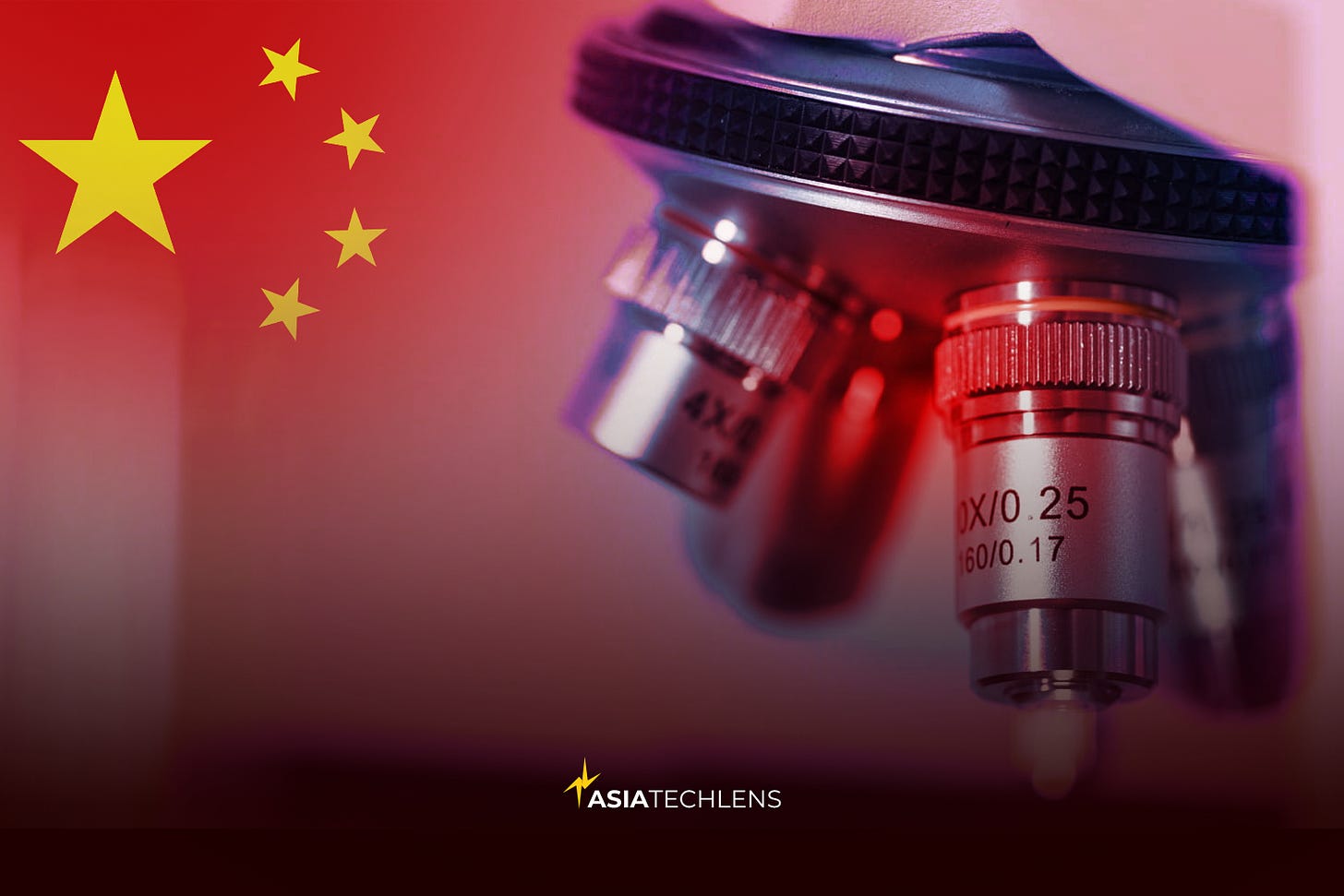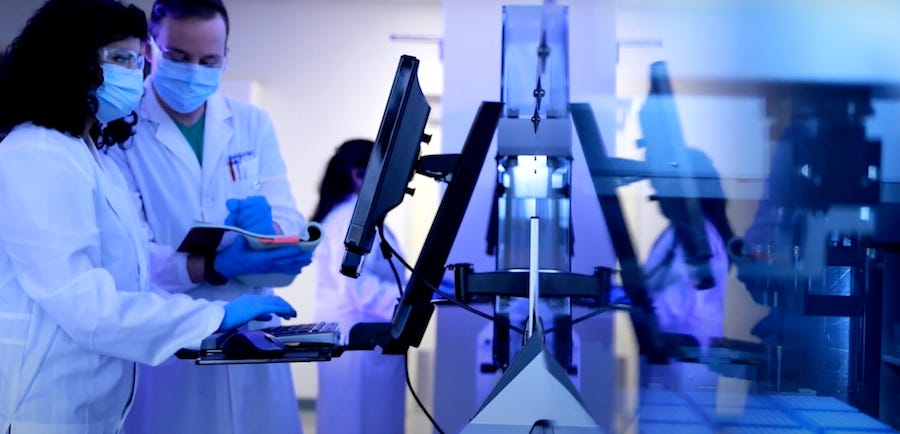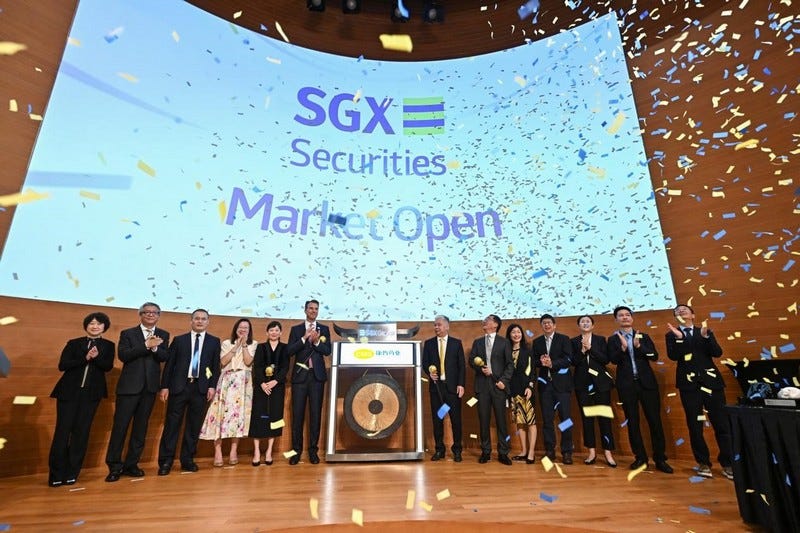China’s Biotech Ambitions Find a Springboard in Southeast Asia
From Singapore labs to vaccine rollouts in Indonesia, Chinese biotech players are turning Southeast Asia into both a market and a launchpad.

The biotech industry is quickly becoming one of China’s most important growth stories. A surge in innovation, an expanding pipeline of new drug candidates, and the use of advanced AI tools are pushing Chinese firms closer to the ranks of global leaders like the US and Europe.
China’s biotech sector is rebounding, with the Hang Seng Biotech Index up nearly 80% in 2025, far outpacing the broader market. Companies like BeOne Medicines and Jiangsu Hengrui Pharmaceuticals are seeing their shares surging by more than 100% and 60% this year, respectively.
China’s rise has been rapid. A decade ago, the country accounted for just 6% of the global innovative drug pipeline. Today, that figure has climbed to 36%.
Why it matters
With its pipeline swelling, China is looking outwards and Southeast Asia is emerging as one of its key testing grounds. Home to more than 700 million people with rapidly expanding healthcare needs, the region is becoming a pivotal arena for China’s biotech ambitions.
At the same time, US and European biotech firms are under pressure. US research funding is shrinking. National Institute of Health (NIH) and Food and Drug Administration (FDA) budget cuts have slashed grant availability, slowed approval processes, and shaken investor confidence in small-to-mid-cap biotechs.
European pharma is also facing regulatory and pricing constraints that impact its operations, innovations, and competitiveness.
Meanwhile, China’s biotech surge offers a lower-cost alternative to expensive Western healthcare products. Multinationals are eyeing Chinese firms for their “cost efficiencies, accelerated timelines, and promising quality,” according to a Jefferies report cited by South China Morning Post.
This strategic gap is opening doors in Southeast Asia. As geopolitical tensions and US funding shortfalls limit Western biotech outreach, Asia-Pacific hubs, including Singapore, are drawing attention.
Singapore as a Launchpad
Many Chinese biotech firms are choosing Singapore as their gateway into Southeast Asia, drawn by its strong IP protection, transparent regulation, and reputation as a trusted investment hub.
Add in government incentives, world-class labs, and a growing talent pool supported by training initiatives, and Singapore becomes an ideal base for R&D, manufacturing, and commercialization.
For these companies, the move delivers more than market access. It brings operational credibility, diversified footprints, and a foothold in one of the world’s fastest-growing healthcare markets, where a rising middle class and aging populations are driving demand for advanced treatments.

Who’s Here
Several Chinese biotech firms have already made their mark in Singapore.
GenScript, a leader in gene synthesis, has expanded its Singapore site into a 3,500-square-metre facility..
WuXi Biologics is also betting big. It has committed US$1.4 billion to build a facility in the city-state that can take biologics from early research through to large-scale production.
China’s genomics giant BGI has also set up in Singapore, part of a regional network of labs that support genetic testing and infectious disease monitoring.
More recently, China Medical System (CMS), a drug innovation and commercialization firm, made its debut on the Singapore Exchange Mainboard in July - its second listing after Hong Kong in 2010.

Beyond Singapore
Singapore is just the tipping point. Chinese biotech firms are pushing deeper into Southeast Asia, tailoring their strategies to local strengths.
Shanghai-based Junshi Biosciences, known for its PD-1 antibody toripalimab, is using a joint venture to roll out the drug across nine markets, including Indonesia, Thailand, and Malaysia. Sinovac, the Beijing vaccine maker behind CoronaVac, has a long-standing presence through Phase III trials in Indonesia and the Philippines and partnerships for local manufacturing.
In Malaysia, investors are partnering with local institutes to tap the country’s biotech potential. Meta Bright Group has teamed up with Shenzhen-listed ChemPartner Pharmatech to build a pharmaceutical and biotech hub, while the government-backed Bioeconomy Corporation is working with TusStar Malaysia, part of China’s largest incubator network, to drive collaboration in agritech, healthcare, and bio-industrial sectors. In Vietnam, low-cost but skilled labor is turning the country into an attractive base for biotech manufacturing and clinical trials.
Southeast Asia clearly benefits from these moves - greater access to new technologies, investment, and R&D - but the reliance on external players also brings risks limiting regional autonomy and exposing supply chains to disruption. Countries will need to diversify supply sources, build domestic capacity, and strengthen regional cooperation.
The Bigger Picture
What’s happening in Southeast Asia reflects a global shift. As US and European firms pull back under financial and regulatory strain, Chinese biotechs are filling the gap. They are no longer just pushing generics but increasingly exporting innovation.
For Southeast Asia, this means access to treatments and technologies that might otherwise remain out of reach. For China, it is a chance to prove it can compete at the highest level. Singapore may be the launchpad, but the contest spans the region. If the current momentum continues, Southeast Asia could well become the springboard that cements China’s place as a global biotech leader.
For More Info on Asia Tech Lens

